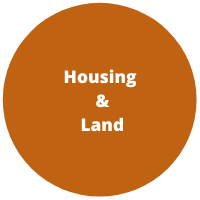To download the report click here. “In the aftermath of the tsunami tragedy, the foremost task of those who come to facilitate and design the rehabilitation process is to enable the survivors to overcome in a dignified way the unthinkable loss of family and property. It is critical that a clear course of action will be undertaken to lead the survivors from being victims to becoming the claimers of their future, able to generate real and sustained change. In order to attain these goals, and enhance the process of development in a holistic manner, it necessitates the learning and dialogue of human rights in a comprehensive way.” Introduction (excerpt)
Shulamith Koenig
Recipient of the 2003 UN Human Rights Award and founding president of PDHRE
Our commitment to achieving human rights as a comprehensive framework challenges us to respond with vision and clarity in times of great loss. The Asian tsunami of 2004 has left more than a million people in need of adequate supplies of food, medicine and massive reconstruction of infrastructure. It is estimated that long-term resettlement and rehabilitation work will continue for another 18 months and beyond. As aid comes in from various organisations and governments throughout the world, we all must recognise that resettlement and rehabilitation can be most effective only when human rights standards are met and the survivors themselves are given the opportunity to transform their lives.
Relief efforts risk turning survivors into dependents of the state when large contractors and government machinery lead the process of rehabilitation without input from the people. Disaster victims often incur the loss of land, capital and rights because of so-called rehabilitation processes. Ignoring the specific needs of the communities at hand is ultimately counterproductive to the objectives of rehabilitation work. In Banda Aceh, Indonesia, for example, previous rehabilitation processes created zoning policies that disempowered communities by forcing them out of traditional livelihoods.
Unfortunately, disasters also tend to exacerbate existing divisions of class, race, caste, gender, religion, age and disability, among other discriminations. Relief measures often can neglect those who are most in need of them by ignoring those divisions. In such situations, reconstruction work is superficial, at best, and serves to reinforce existing inequalities, at worst.
In contrast, while disaster brings with it significant challenges, it also brings enormous potential in the sense that it gives all involved the opportunity to work for humanity. One becomes conscious of one’s own rights and, undeniably, the rights of others. The rehabilitation process gives us the opportunity not only to provide relief to the survivors, but also to create a sustainable human rights culture that produces visible results. This can be achieved through the application of international human rights and humanitarian standards in all post-disaster reconstruction planning and operations. The application of such standards will help ease tensions as well as use the situation to contribute positively toward building an egalitarian society in which the dignity of all is upheld.
Human rights standards will enable all parties involved, from relief and governmental organisations to civic groups, to assess and monitor relief work. It is toward this end that this comprehensive (though not exhaustive) compilation of international human rights norms has been created. We have included only UN and UN agency standards, and not other NGO or government norms for disaster response. The latter is the subject for another compilation and critical analysis.
The present compilation focuses specifically on long-term post-disaster resettlement and rehabilitation. While some organisations may have created internal modes of operation that incorporate broad human rights standards, this is probably the first time that a comprehensive guide has been compiled for external and widespread use. It is our goal to help institutionalise these international standards for all relief and rehabilitation work to come. The use of these standards will be an empowering and foresighted problem-solving tool for those affected, as well as for all parties engaged in post-disaster reconstruction and rehabilitation.
Davinder Lamba Appointed Interim Chair of Kenya Human Rights Commission
Kenya Human Rights Commission (KHRC) is a premier Non-Governmental Organization (NGO) established in April 1992 with a mandate of enhancing human rights-centred governance at all levels in the society. [...]


